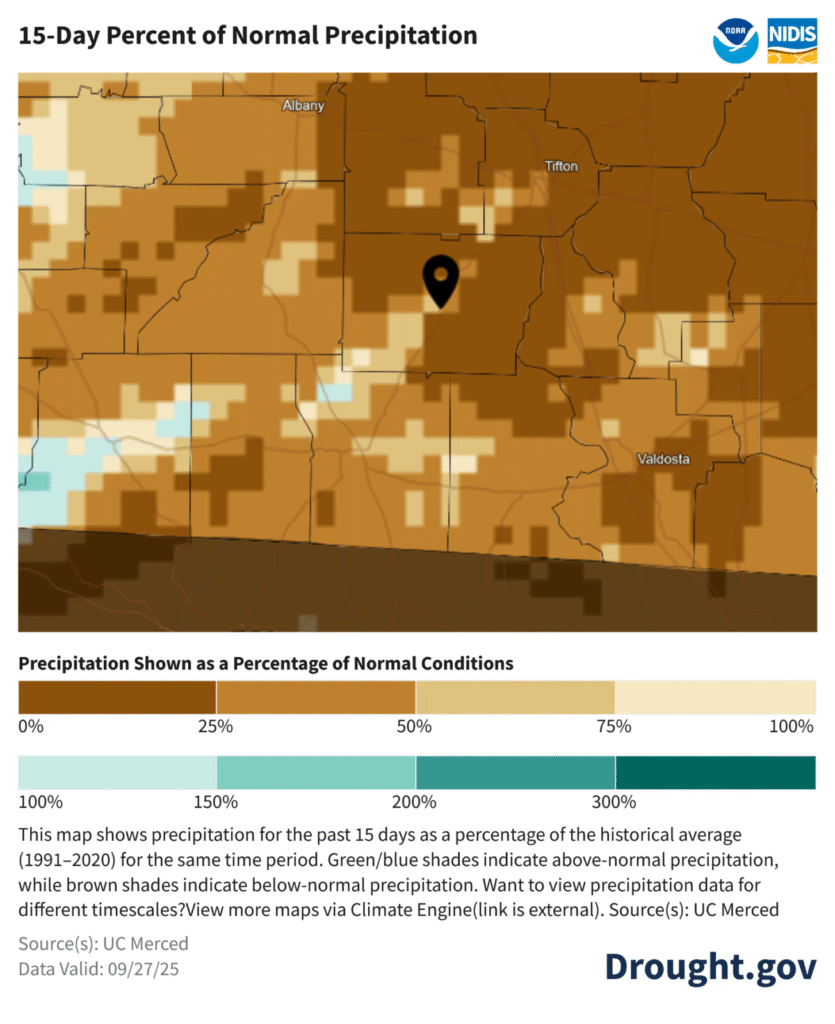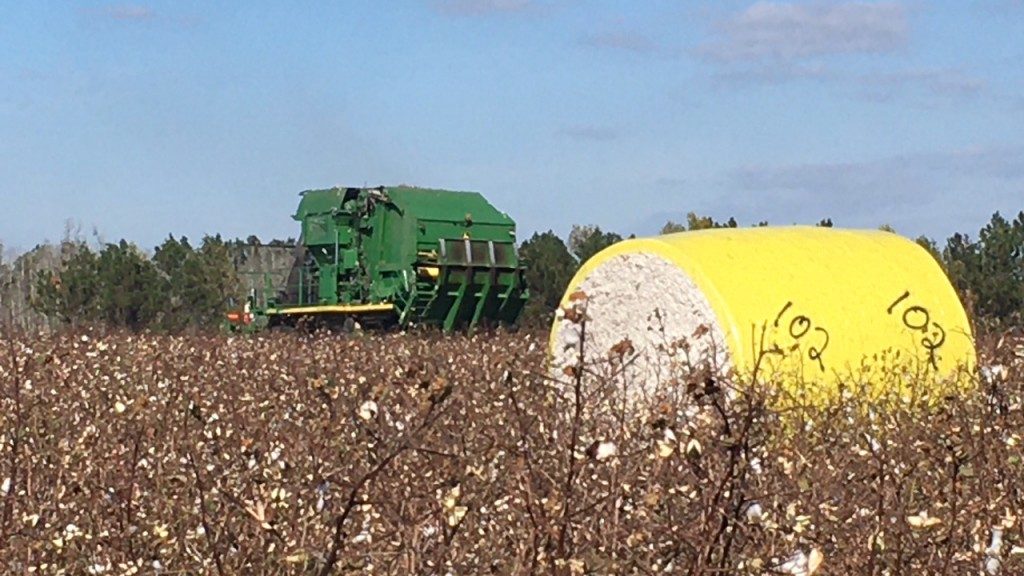Last week was an interesting week in Colquitt County agriculture. No changes in the drought monitor last week, 100% of Colquitt County is considered abnormally dry. The dry land peanut crop has been challenged this year. Pastures and hayfields are suffering from no rain. The graphic below shows the 15 day percent of normal precipitation for our area.

Thoughts on cotton defoliation from Camp Hand.
Keep in mind rainfree periods – rainfall is still spotty but it isn’t fun when you get the opportunity to respray cotton. Keep in mind that Thidiazuron has a 24 hour rainfree period… cut that to 12 hours if you mix with Folex/Def, which most people do.
I had a question or two about watering open cotton to get better defoliation. According to Dr. Hand, it is not worth turning the pivot on as dry as we are. We will lose water in a couple of days and will have to do it again if that’s the plan. Better off waiting to see if we catch a rain and then adjusting as we get closer.
Rates:
First part of week – 4 oz/acre dropp, 10 oz Folex, 32- 42 oz Prep
End of week I would consider bumping folex up to 12 oz, certainly use highest rate of Prep. I like ginstar when it cools off, 6-8 oz should be plenty, but I would spike it with dropp/thidiazuron because of the regrowth potential of this crop. If we get a big rain statewide this stuff is going to go.
Last week was another busy week checking peanut maturity samples. Below is the updated table that includes samples from last week. Fifty-five percent of the peanut samples are from irrigated environments.
Table 1. Average Age in Days to Maturity for Dryland and Irrigated Peanut Samples planted in April and May for Georgia 06G, TifNV, Dynagro 913, and Georgia 12Y in Colquitt County Extension maturity checks.

This week’s USDA Crop progress report shows that Georgia has harvested 17% of the peanut crop and 8% of the cotton crop has been harvested.


The dry weather has challenged livestock producers. Below is an excellent article on stretching hay supplies.
Stretching Hay Reserves is Critical during this “Flash Drought”
Nicolas DiLorenzo, UF/IFAS Cattle Nutrition Specialist, North Florida Research and Education Center-Marianna
How Bad is It?
A combination of effects including very dry weather, and high temperatures have created what the climate experts call a “flash drought” in the Southeastern U.S. While we have had some of these “flash drought” experiences before, this one seems to be unique in terms of how fast it has developed, and how rapidly it intensified in mid-September. The most recent U.S. Drought Monitor (Figure 1) places several counties in North Florida/South Georgia in the “Severe Drought” category for this week. To further illustrate the point, data from the Florida Automated Weather Network (FAWN) station in Marianna, shows a total of 1.1 inches of rain in the last 50 days. Needless to say, we do not have any forages that can sustain adequate growth to feed livestock with such limited soil moisture. READ MORE
Have a safe week and if you have questions please call the office,
Jeremy M. Kichler
Colquitt County Extension Coordinator
The University of Georgia Cooperative Extension does not endorse or guarantee the performance of any products mentioned in this update
